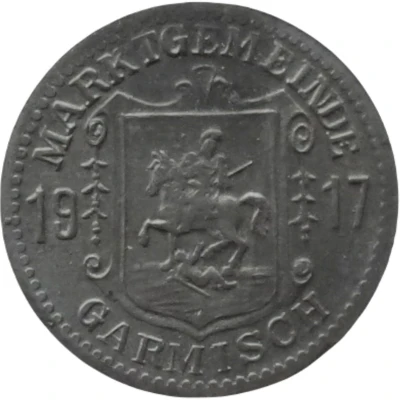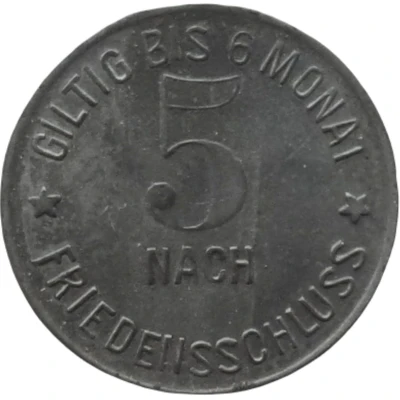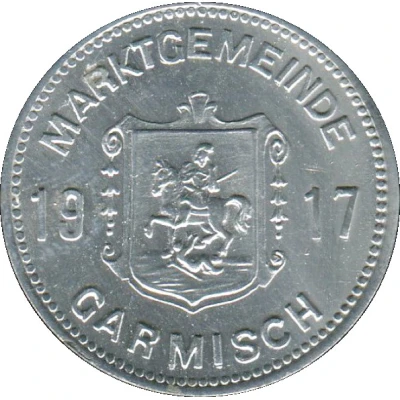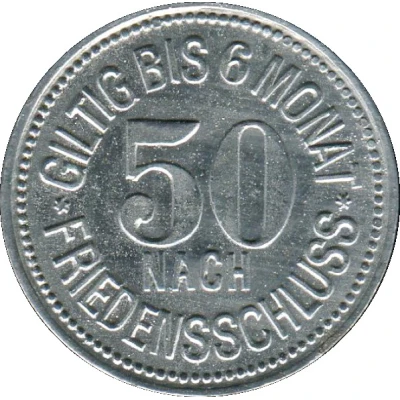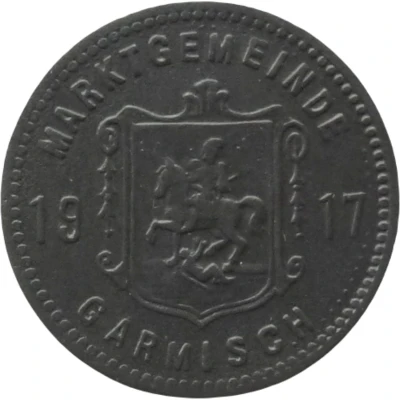
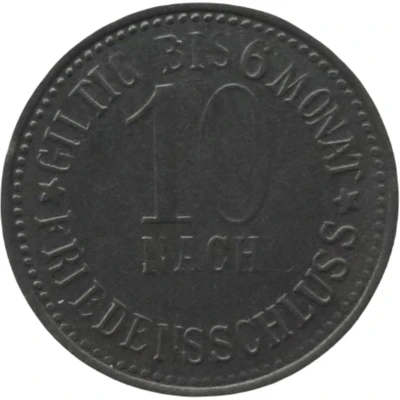

© Willem63 (CC BY-NC-SA)
10 Pfennigs - Garmisch
1917 year| Zinc | 1.67 g | 20.1 mm |
| Issuer | Market Town of Garmisch (Federal state of Bavaria) |
|---|---|
| Emperor | William II (Wilhelm II) (1888-1918) |
| Type | Standard circulation coin |
| Year | 1917 |
| Value | 10 Pfennigs (10 Pfennige) (0.10) |
| Currency | Mark (1914-1924) |
| Composition | Zinc |
| Weight | 1.67 g |
| Diameter | 20.1 mm |
| Thickness | 0.92 mm |
| Shape | Round |
| Technique | Milled |
| Orientation | Medal alignment ↑↑ |
| Demonetized | Yes |
| Updated | 2024-10-04 |
| Numista | N#65142 |
|---|---|
| Rarity index | 75% |
Reverse
Legend surrounding denomination
Script: Latin
Lettering:
GILTIG BIS 6 MONAT
10
NACH
★ FRIEDENSSCHLUSS ★
Edge
Plain
Comment
Issuing authority: [Marktgemeinde, Bayern]Pieces with a countermark AW or just W are private issues from the company Alois Wacker, Garmisch.
Interesting fact
The 10 Pfennigs - Garmisch 1917 coin from Market Town of Garmisch (Federal state of Bavaria) made of Zinc weighing 1.67 g is interesting because it was produced during a time of war, specifically World War I, and its design reflects the economic and political climate of Germany during that period. The coin features a simple and utilitarian design, with the number 10 on one side and the German eagle on the other, symbolizing the country's national pride and unity. Additionally, the fact that it was made of zinc, a relatively inexpensive metal, suggests that the coin was intended for everyday use and circulation, rather than being a collector's item. Overall, this coin provides a unique glimpse into the history and culture of Germany during a significant period in the country's past.
